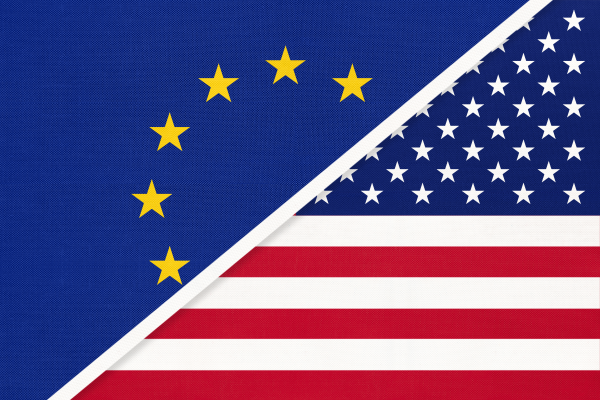According to Belgium-based think tank Sandbag, the EU’s Carbon Border Adjustment Mechanism (CBAM) will have only a modest effect on US exports. By 2034, when CBAM is fully phased in, US exporters would face €351 million in annual fees, equal to just 0.14 percent of the €242 billion worth of US exports to the EU in 2023.
After accounting for price pass-through effects, the net burden drops to €160 million, or 0.07 percent of total exports, underscoring that CBAM will be far from a game-changer for overall US-EU trade.

Sectoral breakdown
The report shows CBAM costs are concentrated in a handful of industries:
- Iron and steel: around €215 million annually
- Fertilizers: around €130 million
- Aluminum: slight net benefit of €3 million thanks to higher scrap content and lower emissions intensity
- Cement: negligible exposure
These figures contrast sharply with the costs EU producers themselves pay under the Emissions Trading System (ETS), which range at €26-30/mt for flat steel and €36/mt for aluminum. By comparison, US exporters gain €19-20/mt on steel and €62-105/mt on aluminum, highlighting a competitive edge for US low-carbon production routes.
Policy scenarios considered
Sandbag modeled three possible US responses to CBAM:
- Business-as-usual: exporters pay full CBAM costs based on their emissions intensity.
- Resource shuffling: prioritizing cleaner US production (EAF steel, scrap-based aluminum) for exports to the EU, lowering declared emissions.
- Domestic carbon pricing: a US carbon price pegged to 25 percent, 50 percent, or 75 percent of the EU carbon price. At 50 percent (€40/mt), CBAM costs would fall to €175 million, and net costs turn negative (€–16 million) due to market price effects.
Possible expansion of CBAM scope
The study also explores how CBAM could evolve. A wider scope might include precursors like coke, lime, and alumina, or downstream goods such as vehicle parts, chemicals, and indirect emissions. In this case, US exporters’ CBAM fees could rise to €1.2 billion annually.
Yet with a 50 percent domestic carbon price, net costs would again flip negative (-€112 million), effectively turning CBAM into a net benefit for the United States.